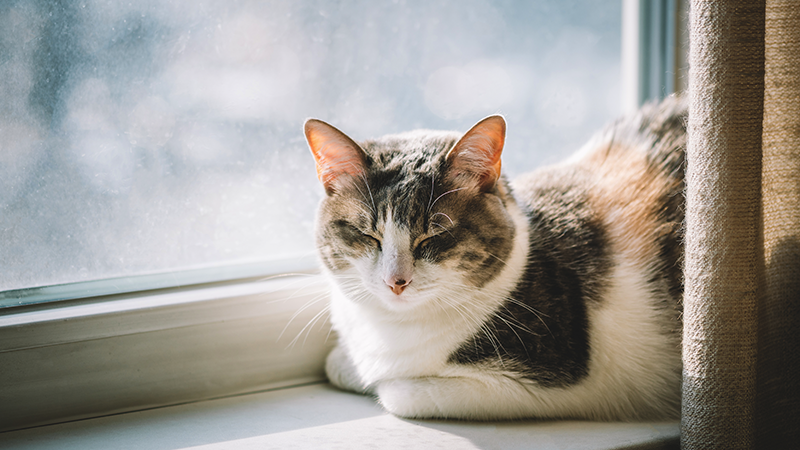
Cats are notorious for acting fine when they’re feeling sick. They tend to hide any signs of illness or injury – even from the people that love them most. Here are a few signs your cat may be sick.
Physical Signs
- Coughing, sneezing, and nasal discharge. Upper respiratory infections are very common in kittens, and adult cats often develop asthma and environmental allergies. Treatment may involve addressing the symptoms or investigating the problem with diagnostic blood testing and x-rays.
- Squinting, red eyes, excessive tearing or crusting. Eye infections, corneal scratches, and exposure to dangerous chemicals are all possibilities. Your vet may perform special tests to stain the eyes, check tear production, or measure ocular pressures in order to come to a diagnosis.
- Dirty ears, head shaking, and scratching. Ear mites are a common disease in kittens. As cats get older, they can develop chronic allergies or even grow small polyps and tumours deep in the ear canals. Your vet may need to look down the ear canals for a complete assessment, which sometimes requires sedation.
- Changes to the skin and coat. Look for redness, scratches, lumps, and sores. Flea dirt looks like somebody took a pepper shaker to your cat’s fur and is especially noticeable between the hips. Don’t forget to check toenails and paw pads!
- Vomiting, diarrhea, and constipation. Many cat owners think that vomiting hair balls is just a thing cats do, but that’s not true. If your cat vomits more than once every two months, or if the vomiting is associated with diarrhea or constipation, you should see your vet.
- Abnormal or unexpected urination. Increased urine in the litter box can be a sign of diabetes. Too little urine can be a sign of kidney disease or toxicity. If your cat is crying in the litter box or has not urinated for 8-12 hours, your cat may have an obstructed urethra. This is a life-threatening situation that requires immediate emergency care.
Behavioural signs
- Change in appetite. Medical problems can be seen with cats who don’t eat for a day or two, and with cats who develop an increased appetite. Appetite changes are especially important to watch for in kittens, seniors, and overweight cats.
- Changes in sleep habits. Cats who sleep more may be nauseated, weak, or feverish. Cats who sleep less may have changes in their blood pressure, brain activity, or metabolic rate. If you find your cat sleeping in a different place because they can’t reach their usual spot, they may be suffering from arthritis or changes in vision.
- Signs of pain or discomfort. Urethral obstruction and broken bones may cause your cat to cry in pain, but other signs can be more subtle. Cats with dental pain chew on one side of the mouth or swallow kibble whole. Look for cats hesitating when they jump on furniture, limping slightly on one leg, or swatting and hissing when you touch a body part they don’t usually mind being touched. Cats that don’t move from a resting place when called for food or treats may be guarding a sore belly or skin abscess.
- Changes in litter box habits. A cat who abruptly changes their litter box habits is often anxious or in pain. Many pet owners think their cat is “mad” at them, and that’s why the cat pees on the bed or in the dirty laundry pile. The opposite is true. The cat is looking for a place of comfort – a place that is normally safe and pain-free. Never scold a cat who has pooped or peed outside the litter box. They are trying to tell you something very important.
Don’t wait until it gets worse
If you see a physical or behavioural change in your cat, contact your veterinarian. Early detection of illness is crucial to the health and wellness of your pet. Contact your veterinarian and have your pet examined.
Pet insurance can help with the cost of vet visits
Even when you give your pet the very best care possible, accidents and illnesses can still happen. Learn what’s covered by Petsecure and get a quote today.
